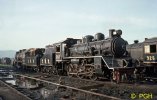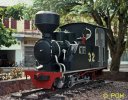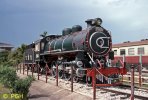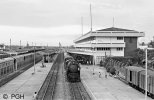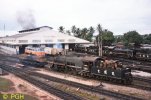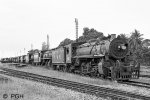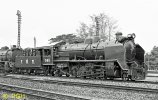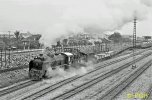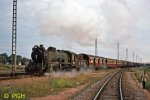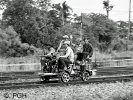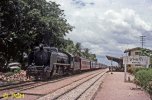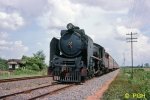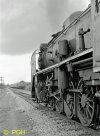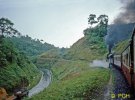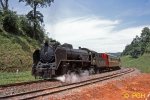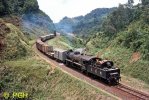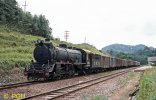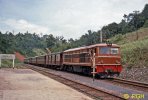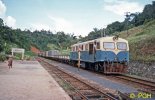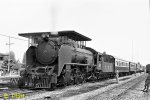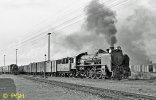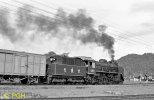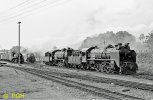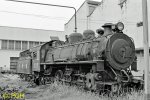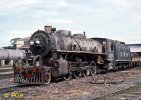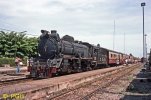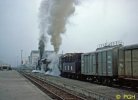PhilH
Western Thunderer
Not sure how this will go down but I'll give it a go - photos taken on a 4 day stopover in Thailand on the way back from somewhere else.
In 1975 steam remained in use at two depots in Southern Thailand (That's the narrow bit that runs down to Malaysia) - Hat Yai near the Malaysian Border and 106 rail miles north at Thung Song. The steam locomotives in Thailand primarily burned wood and in 1961 following a rapid depletion of firewood supply the railway authorities decided to completely dieselise by the end of the 1970s. Locomotives seen in use comprised four types - 2‑6‑0s similar to Japanese National Railways class C56 brought in by the Japanese Army in WWII; 4‑6‑2s built in Japan, 10 in 1942/3 and 30 in 1949/50; 2‑8‑2s built in Japan, 28 in 1936/45 and 70 in 1949/50; and 68 2‑8‑2s built in the USA and supplied in 1946/7, similar to the metre gauge locos supplied to India in WWII. The railways in Thailand are metre gauge and most of the steam locomotives seen were still wood burners with just a few oil burners.
702 at Thung Song Loco Depot, built by Mitsubishi in 1935. This was still fitted with 'chopper' couplings at the front at least whereas all other working stock used buckeye knuckle couplers. 702 is now preserved on static display. Two similar locos, 713 and 715, are maintained in working order for the River Kwai trains.
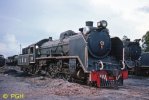
284 at Hat Yai, one of the first batch of 4‑6‑2s built in Japan. All the Japan built 4‑6‑2s and 2‑8‑2s had Elesco type feedwater heaters.
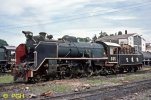
835 at Thung Song from the second batch built in 1949/50, these had capped instead of stovepipe chimneys. I believe this was originally built as an oil burner.
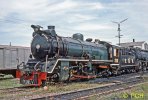
355 at Thung Song, built in 1936 and probably brought in from Japan during WWII.
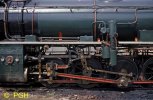
The pump on the left hand side of these locos is part of the Elesco feedwater system.
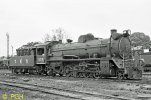
905 at Hat Yai, built by the Japanese Association of Railway Industries in 1949.
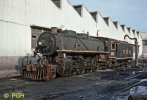
400 one of the US built locos at Thung Song. These were either built by Baldwin or Alco, and there were no builders plates on this one but it had 'Alco' cast on the cylinder block.
tbc
In 1975 steam remained in use at two depots in Southern Thailand (That's the narrow bit that runs down to Malaysia) - Hat Yai near the Malaysian Border and 106 rail miles north at Thung Song. The steam locomotives in Thailand primarily burned wood and in 1961 following a rapid depletion of firewood supply the railway authorities decided to completely dieselise by the end of the 1970s. Locomotives seen in use comprised four types - 2‑6‑0s similar to Japanese National Railways class C56 brought in by the Japanese Army in WWII; 4‑6‑2s built in Japan, 10 in 1942/3 and 30 in 1949/50; 2‑8‑2s built in Japan, 28 in 1936/45 and 70 in 1949/50; and 68 2‑8‑2s built in the USA and supplied in 1946/7, similar to the metre gauge locos supplied to India in WWII. The railways in Thailand are metre gauge and most of the steam locomotives seen were still wood burners with just a few oil burners.
702 at Thung Song Loco Depot, built by Mitsubishi in 1935. This was still fitted with 'chopper' couplings at the front at least whereas all other working stock used buckeye knuckle couplers. 702 is now preserved on static display. Two similar locos, 713 and 715, are maintained in working order for the River Kwai trains.

284 at Hat Yai, one of the first batch of 4‑6‑2s built in Japan. All the Japan built 4‑6‑2s and 2‑8‑2s had Elesco type feedwater heaters.

835 at Thung Song from the second batch built in 1949/50, these had capped instead of stovepipe chimneys. I believe this was originally built as an oil burner.

355 at Thung Song, built in 1936 and probably brought in from Japan during WWII.

The pump on the left hand side of these locos is part of the Elesco feedwater system.

905 at Hat Yai, built by the Japanese Association of Railway Industries in 1949.

400 one of the US built locos at Thung Song. These were either built by Baldwin or Alco, and there were no builders plates on this one but it had 'Alco' cast on the cylinder block.
tbc
Last edited:

